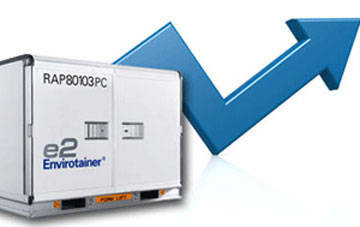Tonnage up but rates to shrink in 2015 says IATA
02 / 03 / 2015

Senior cargo executives at IATA member airlines are predicting that global air freight tonnage will increase next year at its fastest rate since 2010. Yet rates are likely to shrink by a further 5.8 per cent in real terms, intensifying pressure on margins.
Brian Pearce, IATA chief economist, told a media briefing in Geneva that volume measured by freight tonne-kilometres has continued its steady recovery this year. The October figure of almost 14.5bn FTKs surpassed the industry’s all-time peak achieved four years ago.
“We’re seeing growth after a challenging time but we’re facing significant challenges,” Pearce said. IATA heads of cargo foresee a 4.3 per cent increase in volumes to 53.5m tonnes, slightly ahead of this year’s growth rate, but expect further yield erosion.
Air freight yields are now 20 per cent below their 2010 levels, reflecting continued weakness in load factors, and are declining again after some evidence of rate stabilisation mid-year. Pearce said growth in word trade was “half hearted” and business confidence had flat-lined.
Meanwhile, changes in manufacturing patterns could impact on international freight flows. “We are seeing some on-shoring of production for good economic reasons. China has seen a doubling of labour costs in the last 10 years while US energy prices have halved, leading to a renaissance of manufacturing in the US,” he commented.
Pearce also warned of the risks of protectionism, occurring via subtle procurement changes as well as traditional tariff mechanisms. Governments were concerned about protecting jobs at home, but their action risked “shrinking international trade and economic growth for everyone,” he said.
Air’s share of the overall freight market, which fell by 1.5 per cent annually over the first decade of this century, had stabilised since 2012 and air was “becoming more attractive again compared with other modes,” Pearce insisted.
However, the 40 per cent fall in oil prices since mid-2014, while in principle helping airlines control their costs, would not produce an immediate benefit as they would have hedged at least half their fuel requirements at rates north of $90 per barrel.
“The success of their passenger colleagues also challenges cargo departments,” Pearce said. Load factor had stopped falling and freighter utilisation was increasing, underlining the industry’s ability to matching supply to demand, but he stressed that “lots of new capacity is coming online”.
IATA estimates that aircraft deliveries will increase by six per cent in 2015, putting pressure back on utilisation.














